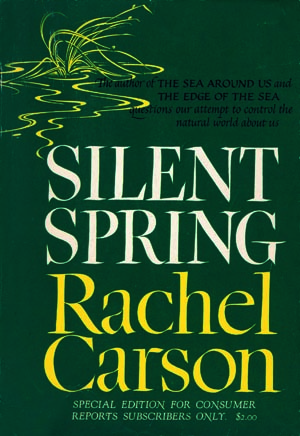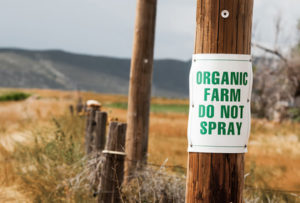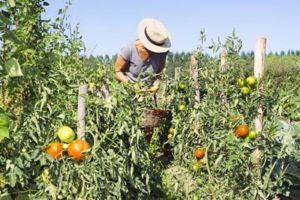Thoughtful readers of Silent Spring with an eye for detail may very well ask: “How were hazardous pesticides ever allowed widespread usage” given that they: could kill children (parathion), could be associated with sterilizing and/or killing birds (DDT), could kill fish and other wildlife (endrin), could accumulate in aquatic food chains (DDD), and be found present at dangerous levels in tissues of waterfowl such as occurred in Clear Lake, California?”[i]
Pre-Silent Spring Pesticide Policy
Part of the answer lies in our nation’s pesticide policy prior to Silent Spring. Then policy-making was dominated by those favoring use of chemical pesticides including: chemical manufacturers, farmers, scientists at the USDA and in state agricultural experimental stations (Dunlap, T.R., DDT: Scientists, Citizens and Public Policy, 1981, p. 97). Individual scientists, even if they opposed the pesticide practices set by those powerful interests, often refrained from speaking publically on such matters for a variety of reasons. Expressing a dissenting point of view could open oneself up to retaliation from program administrators in the public or private sectors — actions that could seriously derail or adversely impact an otherwise successful career.
Scientists Contributing to Silent Spring
 Nevertheless, members of the scientific community in the US and abroad generated a reliable body of data on the adverse impacts of pesticides. Diligently selecting and verifying scientific material for Silent Spring, Carson sought to give ordinary citizens true facts to fight with, for human health and a healthy environment.[ii] Much of the information in Silent Spring was generally previously unknown other than to those researchers whose work focused on pesticides, cancer, neurotoxicity and/or wildlife.
Nevertheless, members of the scientific community in the US and abroad generated a reliable body of data on the adverse impacts of pesticides. Diligently selecting and verifying scientific material for Silent Spring, Carson sought to give ordinary citizens true facts to fight with, for human health and a healthy environment.[ii] Much of the information in Silent Spring was generally previously unknown other than to those researchers whose work focused on pesticides, cancer, neurotoxicity and/or wildlife.
Beyond Silent Spring
Seven years after Silent Spring appeared, public concern over the environment had grown so widespread that in the USA 1969 came to be known as the year of the environment, when “The environment became an issue second only to the [Vietnam] war.” (Dunlap p. 196) This was due to greatly increased public acceptance of the concepts that human action could adversely affect the environment: that technology could be harmful and that information from “so called” experts was not necessarily to be considered credible without confirming the absence of conflict of interest. In Rachel Carson’s words: “As you listen to the present controversy about pesticides, I recommend that you ask yourself—Who speaks?—And Why?” (“A New Chapter to “Silent Spring.” Bulletin of the Garden Club of America, May 1963)
Today in 2017, current controversies about pesticides involve the herbicide glyphosate, the insecticide chlorpyrifos, insecticides of the neonicotinoid chemical class and most recently the herbicide dicamba.
Dicamba in Agriculture:
Growers of non-GMO crops (conventional and organic) are protesting that their farms and livelihoods are being adversely impacted by the chemical herbicide dicamba. (Dicamba Toxicity Facts) This volatile chemical can drift away from where it had been applied for weed control in fields planted with GMO crops (genetically modified to resist damage from dicamba).[iii] Dicamba currently has supplemented or replaced Roundup (the herbicide that had been applied continuously for the past 2 decades to these same GMO crops). Why? Because certain weeds, repeatedly exposed to Roundup over time, through natural mechanisms, have become immune to the herbicide glyphosate (active ingredient in Roundup).
Farmers with non-GMO crops injured by dicamba drifting onto their fields have appealed to regulators for protection from this volatile herbicide. As a result the state of Arkansas announced a 120-day ban on dicamba this summer [2017] and “it is considering barring its use next year [2018] after mid-April. Missouri briefly barred its sale in July [2017].” (Hakim, D., “Seeds, Weeds and Divided Farmers,” The New York Times, 9-22-17). The USEPA, however, has not taken action thus far in restricting dicamba’s use to mitigate farmers’ concerns about this hazardous herbicide.
Reports of Dicamba Damage
 Farmer Wally Smith of Arkansas has been speaking out about damage to his non-GMO crops and trees that have been seriously harmed by dicamba drifting from nearby GMO fields. The damage is so serious that Smith’s farm manager wonders if he will have a job next year. (Dewey, C., “Weed killer meant to help farmers is out of control,” Wash Post, 8-30-17).
Farmer Wally Smith of Arkansas has been speaking out about damage to his non-GMO crops and trees that have been seriously harmed by dicamba drifting from nearby GMO fields. The damage is so serious that Smith’s farm manager wonders if he will have a job next year. (Dewey, C., “Weed killer meant to help farmers is out of control,” Wash Post, 8-30-17).- Brad Williams, a Missouri farmer is dismayed by the dicamba-generated damage to his non-GMO soybean crop and to his trees. On his property there are trees with leaves so deformed “you couldn’t even identify the differences between them.” (Hakim, D., “Seeds, Weeds and Divided Farmers: Monsanto herbicide blankets fields not planted with the company’s chemical resistant seeds,” NYT, 9-22-17)
- Dicamba has been found toxic to conifer trees (see Dicamba Toxicity Facts)
- Dicamba has adversely affected “more than three million acres” (Hakim, D., NYT, 9-22-17).
- Nearly a dozen states have complained [about dicamba] to the EPA” (Dewey, C., Wash Post, 8-30-17).
- Field tests by researchers at several universities found that dicamba “can volatilize and float to other fields as long as 72 hours after application.” (Dewey, C., Wash Post, 8-30-17).
- The head of agriculture at an Indiana-based tomato processor stated that “The widespread use of dicamba is incompatible with Midwestern agriculture [and] “Even the best, the most conscientious farmers cannot control where this weed killer will end up.” (Hakim, D., NYT, 9-22-17)
- Charles Benbrook, a weed scientist…said, “For both dicamba and 2,4-D, the reproductive risks and birth defects” are “most worrisome.”(Hakim, D., NYT, 9-22-17)
- Dicamba is hazardous to vegetables, fruits, ornamentals, flowers and other broad leaf plants thriving in back yard gardens, cultivated as commercial crops, and just growing wild.
- Farmers and others are calling for better regulation of this volatile, hazardous weed killer.
Dicamba in Landscapes
Today, dicamba is permitted to be used on lawns for cosmetic purposes. When applied to turf (as with applications to crops), dicamba can volatilize, drift and cause harm.
 For more than a decade, home gardeners have been warned that 2,4-D a herbicide with effects similar to those of dicamba can damage tomatoes and beans due to pesticide drift from a nearby application site. (see “Are Lawn and Garden Pesticides Hazardous: Is There Evidence? And What Can Be Done?”).
For more than a decade, home gardeners have been warned that 2,4-D a herbicide with effects similar to those of dicamba can damage tomatoes and beans due to pesticide drift from a nearby application site. (see “Are Lawn and Garden Pesticides Hazardous: Is There Evidence? And What Can Be Done?”).- Irate farmers and some scientists now are calling attention to the problems with dicamba, and several major media publications are reporting on the issue.
- Flower and vegetable gardeners need to speak out alongside farmers and scientists in asking for restrictions on the volatile herbicide dicamba as well as similar herbicides (like 2,4-D) and other hazardous chemical pesticides used for cosmetic purposes on lawns.
(See Dicamba Toxicity Facts)
Alerting Students and Families to Pesticide Hazards
 Recently, high school teachers have incorporated the newly developed Johns Hopkins U. food based curriculum, “FoodSpan” into their lesson plans. Food- Span encourages students to plant vegetable gardens on school grounds and/or at home.(Meehan, S., “Johns Hopkins’s curriculum plants nutritional lessons,” Wash Post, 10-10-17) In conjunction with cultivating tomatoes, kale and beans, students, administrators and local community leaders need to become aware of the serious toxic effects that pesticides such as dicamba, 2,4-D and others can have — even if used for cosmetic reasons on nearby neighborhood landscapes.
Recently, high school teachers have incorporated the newly developed Johns Hopkins U. food based curriculum, “FoodSpan” into their lesson plans. Food- Span encourages students to plant vegetable gardens on school grounds and/or at home.(Meehan, S., “Johns Hopkins’s curriculum plants nutritional lessons,” Wash Post, 10-10-17) In conjunction with cultivating tomatoes, kale and beans, students, administrators and local community leaders need to become aware of the serious toxic effects that pesticides such as dicamba, 2,4-D and others can have — even if used for cosmetic reasons on nearby neighborhood landscapes.
Our communities need to pass regulations making certain that professionals eliminate these and other hazardous chemicals from turf applications for cosmetic purposes. Why? Pesticides (herbicides, insecticides, fungicides) applied to turf can drift to school-based as well as home gardens and potentially inflict damage on plants, people and wildlife. (See: Healthy Lawns Act of Montgomery County, MD on RCLA web site —
Testimony Supporting Bill 52-14 from January 15th Hearing
Memo addressing Montgomery County Councilmember Roger Berliner’s opposition to Bill 52-14
Conclusions
The persuasive message of Silent Spring “… marked a watershed, as the private, scientific debate [on pesticides] became a public, political one.” (Dunlap, p. 97). “There has been some change in scientists’ ideas about their social responsibility. They are less reluctant to become involved in public issues, and more concerned about the use of their research results…” (Dunlap, p. 245)
“In developing the case against DDT Carson made what was the clearest case to that time of the central tenet of the environmental movement: that human action has become the dominant environmental influence on the rest of the planet, an influence that has spread to the farthest reaches of the world.” (Dunlap, p. 101-102).
Carson’s influence helped bring environmental issues into greater prominence as she “…provided an alternative ideology, a replacement for the faith in… technology and power…” widespread at that time.
“We must, she said become part of the natural world again, recognizing our ultimate dependence on the processes of nature, and working with, rather than against, them.” (Dunlap. P. 102).
In the 1970s there were concerns about nuclear warfare and adverse impacts of man-made technology on the environment. Similar concerns exist today. Maurice Strong, first Secretary General of United Nations Environmental Program (UNEP), a non- scientist, and former Canadian industrialist considered that these challenges require a new kind of cooperation his words remain pertinent for us in 2017.
He observed:
“The threats to man’s existence from nuclear warfare can be avoided right up until the moment someone pushes the button, but the threat to man’s survival which derives from our interventions in our natural environment is [where]…each of us has his finger on the button and this responsibility requires us to act now to avoid dangers which will not materialize until the next generation or beyond – but still within the lifetime of our own children or grandchildren – and will be beyond remedy by the time they are perceived as imminent threats. To deal with issues which involve cause and effect relationships so far removed from more immediate and pressing priorities will require a degree of enlightened political will on the part of the peoples and nations of the world that is without precedent in human history.” (Zierler, D., The Invention of Ecocide: Agent Orange, Vietnam, and the Scientists Who Changed the Way We Think About the Environment, 2011)
The need to work with nature not against it is an urgent message that requires retelling today. Those of us committed to it must strive to make 2019 become another year of the environment in honor of Rachel Carson and in tribute to others sharing our concerns. The year 1969 can provide a benchmark for our efforts as we approach its 50th anniversary.
Below are 6 questions raised by the dicamba issue (for consideration and further discussion)
- Is the influence over US regulatory policies by pro-pesticide interests compatible with sustainable agriculture?
- Are more scientists speaking out on issues and if so who is listening?
- Could the adverse effects of dicamba on non-GMO crops force some farmers to grow only GMO crops (rendered resistant to dicamba) in order to stay in business even if in principle they oppose genetic engineering of crops?
- Could Consumers’ purchasing of non-GMO-labeled products provide sufficient financial support to growers as they struggle to maintain viable organic and conventional practices in the face of toxic trespass by dicamba and other pesticides?
- If dicamba is harmful to farm based plants and trees could it not also harm plants and trees in public sites that belong to everyone?
- Can we hope that Carson’s call for working with nature will inspire citizens to vote to elect candidates running in county and state elections who support a full range of sustainable ways of dealing with the environment including: producing food, generating energy, maintaining biodiversity, providing full gainful employment while also keeping us healthy and safe?
Dicamba Toxicity Facts
Dicamba is a benzoic acid chlorinated synthetic chemical herbicide. It is toxic to broadleaf plants with an action similar to the phenoxy weed killers (2,4-D, etc).
Dicamba has volatilized under field conditions and injured non-target crops. (NPIC, http://npic.orst.edu/factsheets/archive/dicamba_tech.html)
Dicamba is hazardous to eyes and to skin in laboratory animal tests. The USEPA considers dicamba to be moderately toxic to the skin and eyes (NPIC, p. 6) Signal words for products containing dicamba may range from “Caution” to “Danger.” (NPIC) Dicamba has been found toxic to liver cells in laboratory tests. Signs of dicamba-induced toxicosis in animals include shortness of breath, muscle spasms, cyanosis, urinary incontinence, and collapse. (NPIC)
The USEPA has determined that dicamba is not likely to be a human carcinogen. However, an epidemiological study examining the cancer rate among dicamba applicators, “weak associations were observed for lung and colon cancer.”(NPIC)
In acute toxicity tests, dicamba has been found moderately toxic to birds and honeybees and of low toxicity to fish and aquatic invertebrates. (NPIC)
“English pointer dogs exhibited abnormal muscular activity…[mainly in the hind limbs] following oral exposure to dicamba. Myotonia (persistent contraction of the muscles after electrical stimulation has ceased) was also observed.” (NPIC). Please Note: Myotonia in dogs has been linked to 2,4-D. (Osweiler, Carson, Buck, Van Gelder, Clinical & Diagnostic Vet Tox, 3rd ed, 1985)
Dicamba has been found toxic to conifer trees. (Ryker, Russell, “Effects of dicamba and picloramon some northern Idaho shrubs and trees.”USDA Forest Service Research Note INT-114, 1970)
Dicamba has potential to leach through the soil to reach groundwater and to persist in water. (O’Brien, M.,”Dicamba” NCAP, 1988)
Dicamba was first was marketed in 1967. The basic formula (in acid and salts) is reported to have an unintentionally produced DCDD, a dioxin contaminant (Not the ultra toxic TCDD). Another contaminant of the amine salt formulations of dicamba can be the carcinogen DMA. (ChemicalWATCH, August 1987). Both contaminants have been associated with cancer (Basic Guide to Pesticides, Briggs, S., & RCC, 1992).
Diana Post and Munro Meyersburg 11-3-17
Endnotes
[i] In Clear Lake as the result of 3 applications of DDD over 9 years (1948, 1954, 1957) a population of waterfowl (Western Grebe) was rendered unable to reproduce and certain individual Grebes were killed. The level of DDD in the tissue of the Grebes reached 85,000 times the concentration first applied to the lake in 1948.
[ii] When citing specific information in Silent Spring, Carson was careful to identify only those researchers believed not to be at risk of retaliation for their work.
[iii] For the past 2 decades certain major US crops (including soybeans and cotton), have been genetically modified (through use of biotechnology) to be resistant to the herbicide, Roundup. Genetically modified crops, are called GMOs. Higher levels of Roundup than applied to conventional crops have been used to kill weeds in the fields where GMOs are grown. But, heavy Roundup use on GMO crops has resulted in the targeted weeds developing resistance to Roundup through natural processes. Newly created GMO versions of soy and cotton crops again using biotechnology, have been made resistant to dicamba (a herbicide to which the weeds appear susceptible as of 2017).



